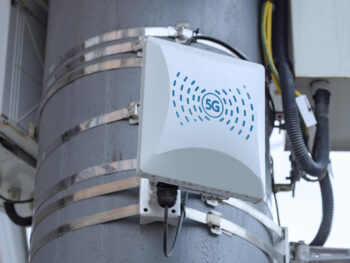If you've ever walked through a town and spotted tiny cell towers for 5G on street light poles. They appear like tiny boxes, but they're actually broadcasting wireless signals from cell phone providers to your mobile.
The smaller ones are being replaced by larger built cell towers. While they're not as noticeable however, they could cause problems for people.
It is the FCC's Radiation Exposure Thresholds
The FCC's Radiation Exposure Thresholds define the maximum amount of time an individual can be exposed to electromagnetic energy from wireless devices. The exposure limits are based on research that show that RF energy can be harmful to human health.
The rate of absorption called the specific absorption rate (SAR) is an indication of the radiofrequency energy absorbed by tissue. It's typically 1.6 Watts per kilogram spread over a Gram of tissue.
Since 5g is able to transmit at higher frequencies this could be able to increase the intensity of energy on the skin as well as other body parts. This could result in a wide range of potential harms, including exacerbated formation of skin disorders such as dermatitis and skin cancer and cataracts.
Due to the potential for negative effects of 5G radiation, PSU has chosen to establish a general, localized maximum power density of four mW/cm2 based on the average across 1 centimeter, and never to exceed 30 minutes, for all 5G services at 3000 GHz. This localized limit is in accordance with the maximum SAR spatial-average of 1.6 W/kg averaged over 1 g of tissue at 6 GHz.
The FCC's Maximum Exposure Thresholds for Maximum Exposure
If you've ever operated a cell phone, then you're aware that the safest distance from the tower should be at least 400 meters. This is due to the power of transmission from a cell tower increases dramatically the further away the tower is.
Although this may sound like a good idea, the reality is that those living close to towers may actually be more prone to health problems. For example, a study from 2014 in India discovered that those who lived within 50 meters from cell towers suffered significant more health issues than those who were distance from them.
This study showed that residents who moved to areas further away from cell towers noticed their symptoms return to normal within a couple of days. Other studies have revealed that exposure to high amounts of electromagnetic field radiofrequency (EMFs) can lead to brain tumors, cancers as well as other health issues.

This is due to the fact that radiofrequency radiation, which is utilized in wireless communications, may be absorbed by the body's outer layer of skin. It is vital to be aware of this because the skin acts as a barrier to protect against mechanical injury, infection by pathogenic microorganisms, and the entry of harmful substances. It is also the biggest organ of the human body. It is responsible for maintaining the integrity of other organs.
The FCC's Minimum Exposure Thresholds for the Minimum Exposure

The FCC's Minimum Exposure Thresholds rely on numerous assumptions that are not supported by scientific evidence. These include the erroneous assumption that exposures to RF radiation are safe due to minimal penetration into the body (i.e. thermal heating of tissue).
what is a safe distance from a 5g cell tower is also ignoring the more extensive penetration of ELF elements of modulated radio signals as well as the effect on the body of short bursts generated by RF waves that are pulsed. These assumptions are not in line with current understanding of the biological consequences of RF radiation. As such, they should not be used for health protective exposure guidelines.
Furthermore to that, ICNIRP and FCC restrict their maximum exposure limits to local peak SARs, based on the peak frequency of absorption (psSAR), which can be described as not a sufficient dosimetric tool for determining the level of radiation exposure. Particularly, psSAR is inaccurate for frequencies that exceed 6 GHz. In addition, psSAR is not been tested for RF radiation with co-exposure to other environmental agents , such like sunlight. Interactions of RF radiation and other environmental agents could cause synergistic or antagonistic effects. This could result in the risk of having adverse health effects. For instance, exposure to RF radiation along with exposure to sunlight can cause an increase in the incidence of skin cancer and exacerbate other skin diseases such as acne.
